With October Just Around The Corner, NASA Has Released Its Latest Galaxy Of Horrors Posters. Presented
With October just around the corner, NASA has released its latest Galaxy of Horrors posters. Presented in the style of vintage horror movie advertisements. As fun and creative as all three posters are, they're based on real phenomena. 🎃
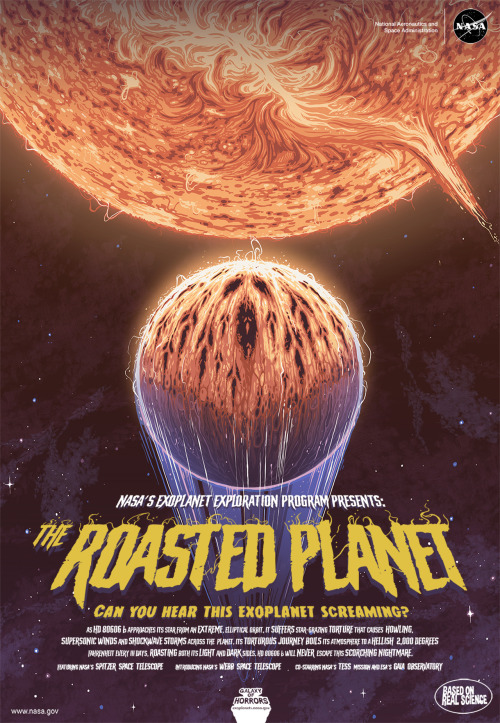
Can you hear this exoplanet screaming?
As HD 80606 b approaches its star from an extreme, elliptical orbit, it suffers star-grazing torture that causes howling, supersonic winds and shockwave storms across the planet. Its torturous journey boils its atmosphere to a hellish 2,000 degrees Fahrenheit every 111 days, roasting both its light and dark sides. HD 80606b will never escape this scorching nightmare.
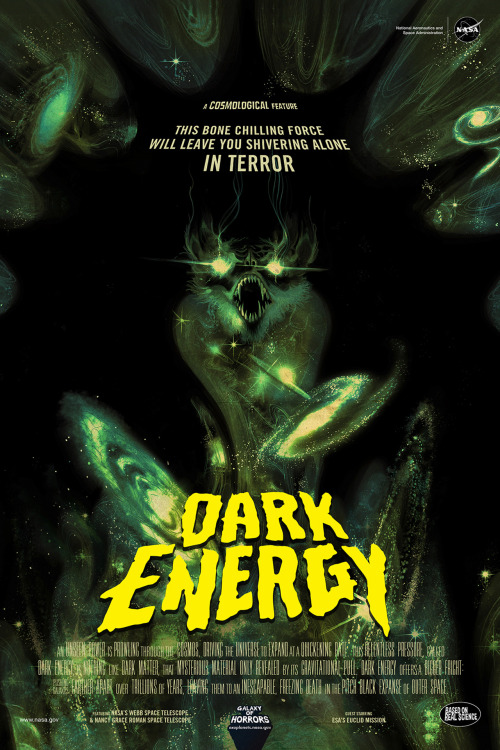
This bone-chilling force will leave you shivering alone in terror!
An unseen power is prowling throughout the cosmos, driving the universe to expand at a quickening rate. This relentless pressure, called dark energy, is nothing like dark matter, that mysterious material only revealed by its gravitational pull. Dark energy offers a bigger fright: pushing galaxies farther apart over trillions of years, leaving the universe to an inescapable, freezing death in the pitch black expanse of outer space.
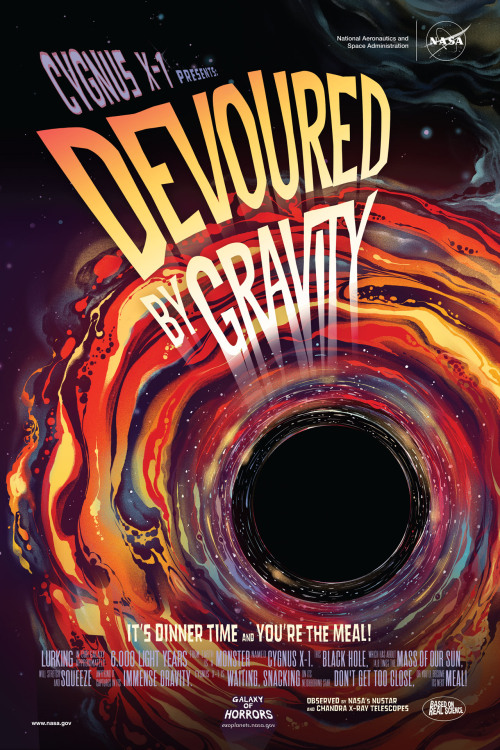
Cygnus X-1 Presents:
It’s Dinner Time and You’re The Meal!
Lurking in our galaxy, approximately 6,000 light-years from Earth, is a monster named CygnusX-1. This black hole, which has about 14.8 times the mass of our Sun, will stretch and squeeze anything it captures in its immense gravity. Cygnus X-1 is waiting, snacking on its neighboring star. Don’t get too close, or you’ll become its next meal!
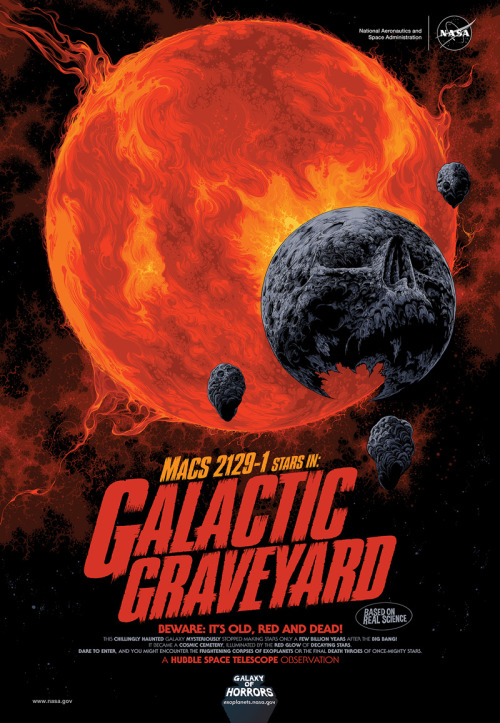
This chillingly haunted galaxy mysteriously stopped making stars only a few billion years after the Big Bang! It became a cosmic cemetery, illuminated by the red glow of decaying stars. Dare to enter, and you might encounter the frightening corpses of exoplanets or the final death throes of once-mighty stars.
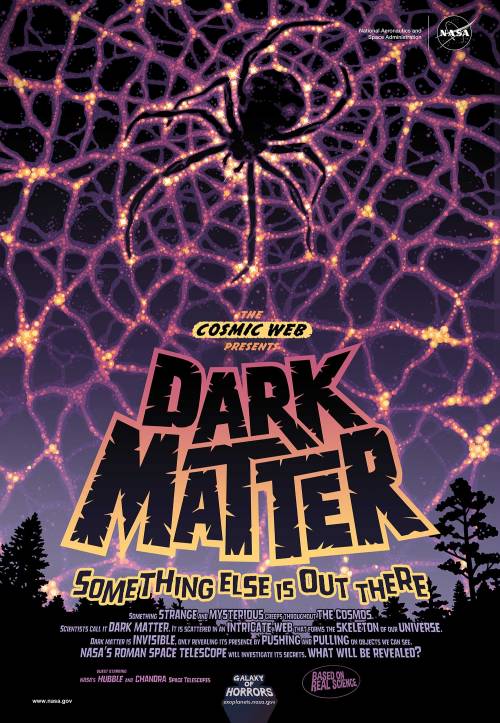
Something strange and mysterious creeps throughout the cosmos. Scientists call it dark matter. It is scattered in an intricate web that forms the skeleton of our universe. Dark matter is invisible, only revealing its presence by pushing and pulling on objects we can see. NASA’s Roman Space Telescope will investigate its secrets. What will be revealed?
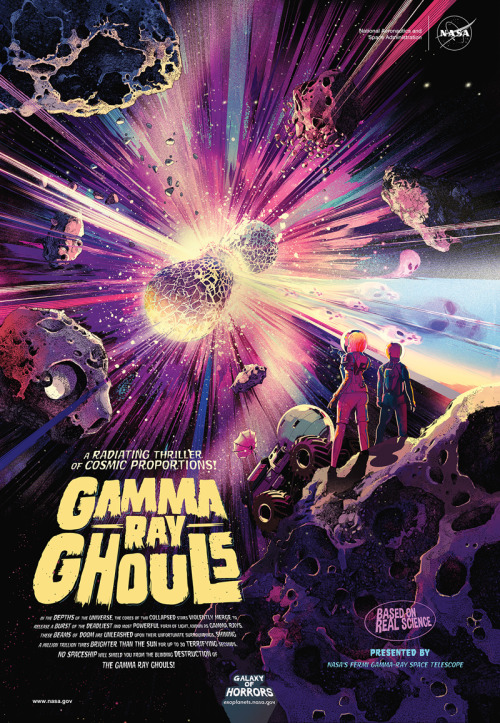
In the depths of the universe, the cores of two collapsed stars violently merge to release a burst of the deadliest and most powerful form of light, known as gamma rays. These beams of doom are unleashed upon their unfortunate surroundings, shining a million trillion times brighter than the Sun for up to 30 terrifying seconds. No spaceship will shield you from the blinding destruction of the gamma ray ghouls!
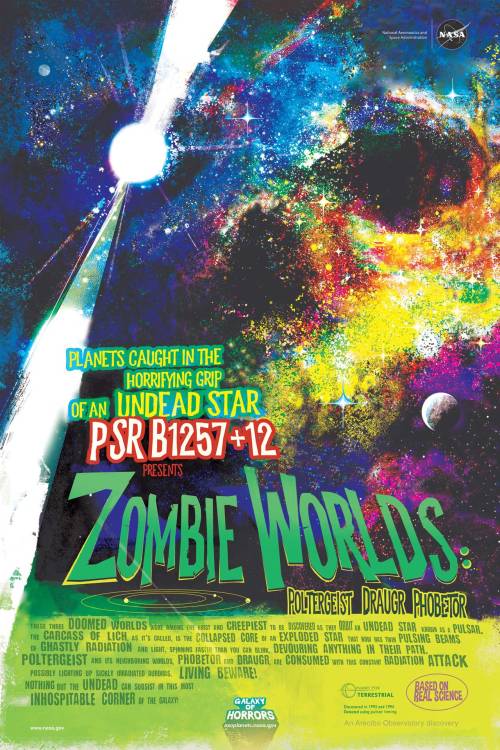
These doomed worlds were among the first and creepiest to be discovered as they orbit an undead star known as a pulsar. Pulsar planets like Poltergeist and its neighboring worlds, Phobetor and Draugr, are consumed with constant radiation from the star’s core. Nothing but the undead can subsist in this most inhospitable corner of the galaxy.
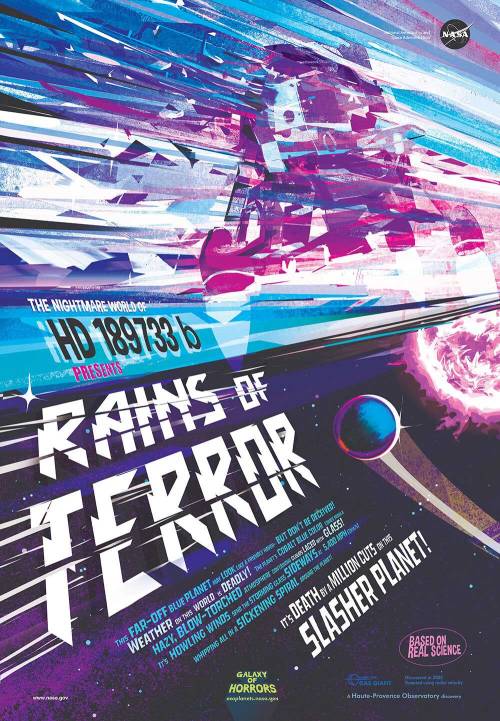
This far-off blue planet may look like a friendly haven – but don’t be deceived! Weather here is deadly. The planet’s cobalt blue color comes from a hazy, blow-torched atmosphere containing clouds laced with glass. Howling winds send the storming glass sideways at 5,400 mph (2km/s), whipping all in a sickening spiral. It’s death by a million cuts on this slasher planet!
More Posts from Night-hides-the-world and Others
Seriously done with life..

Once again, I got rejected from a job the moment i came into an in person interview which is strange since the person was desperate to see me only to cut the inteview short upon noticing I am not what she thought i was (I’m brown skinned.)
This has been happening to me for almost 2 years and despite my 10+ years graphic design experience, I guess it’s not enough, i get the fake smile, the awkqard atmosphere and then “Well…we were really looking for someone who is self motivated and creative….” Even though they already saw my portfolio and resume and just had to see me as I would always be the first one to be interviewed. Afterwards I would get the “Well…we’re still interviewing and …we’ll be in touch” Nonsense. ::sigh::
I guess i’m giving up all together…i’ve applied to over 2000+ job applicaitons and I either get job rejections automatically or situations like this when I actually get my foot in the door for an in person inteview.
Perhaps I wasn’t meant to work for anyone and maybe this is God telling me to focus on Cosmic Funnies as my job.
Whichever it is, I am tired and wanting to give up on life. I work so hard and I feel like i’m getting nowhere.
If you wish for me to make Cosmic Funnies my job, please support me on my Ko-fi so I can actually have food to eat:
https://ko-fi.com/cosmicfunnies
I have a patreon as well: https://www.patreon.com/cosmicfunnies
I have two sales going on my cosmic funnies site
https://www.cosmicfunnies.com/starry-shop
Use code STARRYSCHOOL30 (sale ends september 20th)
Check out my latest planner:
They’re on the book shop in both soft and hard cover, 6x9 and 8x10 and it will come with starry emojis deluxe 2 sticker set so you’re getting a nice bundle for one price.
https://www.cosmicfunnies.com/book-shop/cosmic-funnies-17-month-planner-2019-2020

http://cosmicstickies.bigcartel.com
This is my sticker shop where you can purchase foil stickers, planner stickers and more..
And if you’re looking to hire a designer, check out my portfolio: https://jackiemoliner.myportfolio.com
And contact me at cosmicfunnies@gmail.com
I don’t emjoy asking for help but sadly I have no choice but to humble myself and ask for help since this world is so cruel that sometimes I just want to off myself. I’m seriously tired of living.
Thanks for your support….and have a great day.
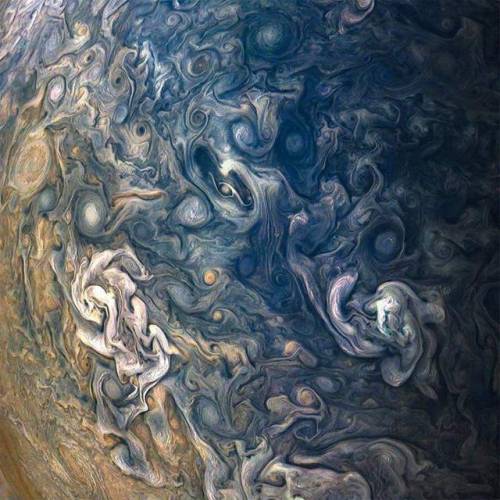
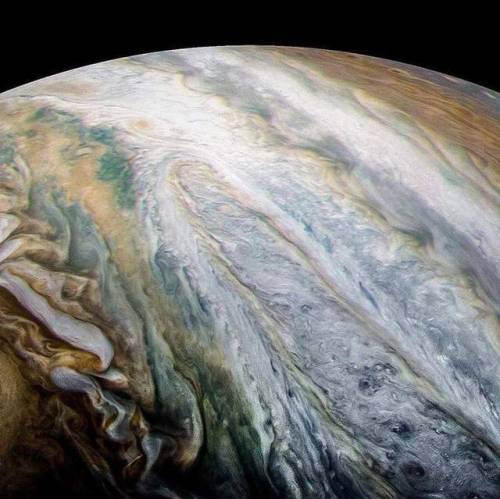
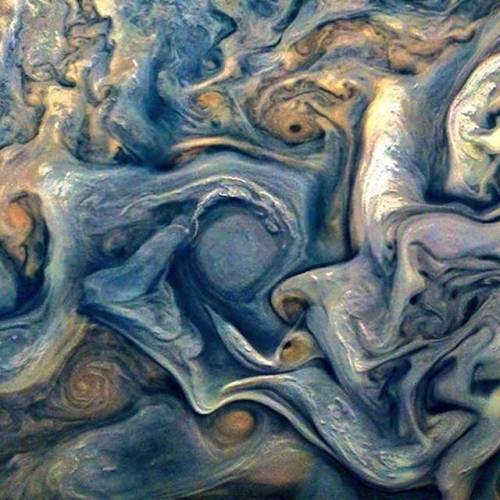
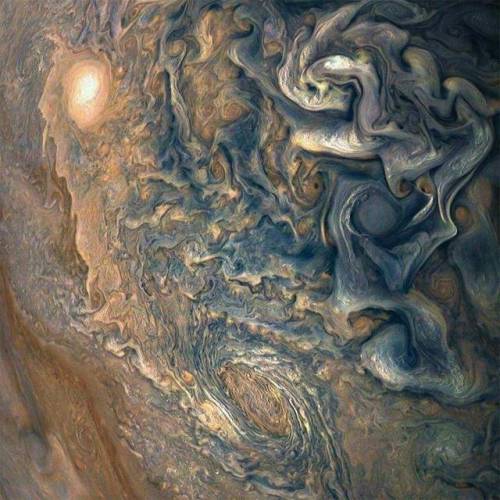
NASA has released new images of Jupiter, taken by the Juno Spacecraft.
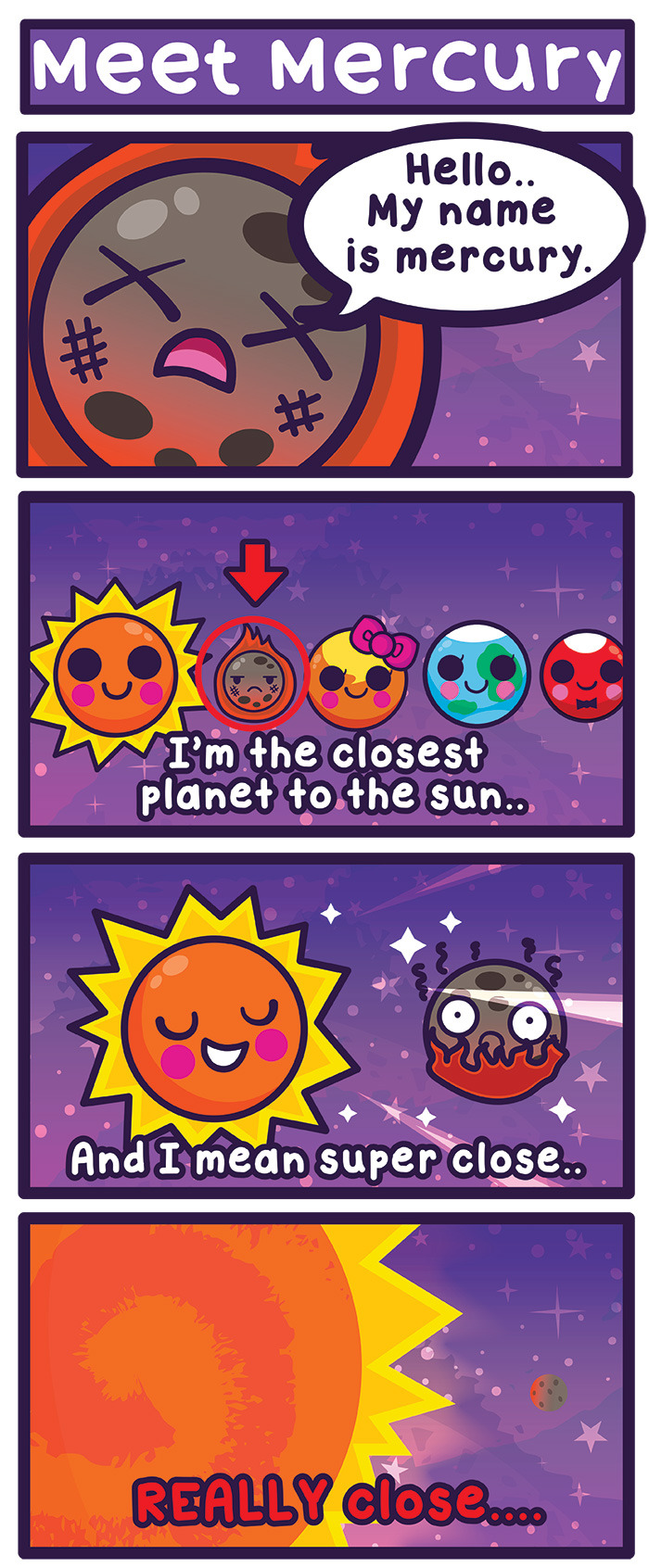
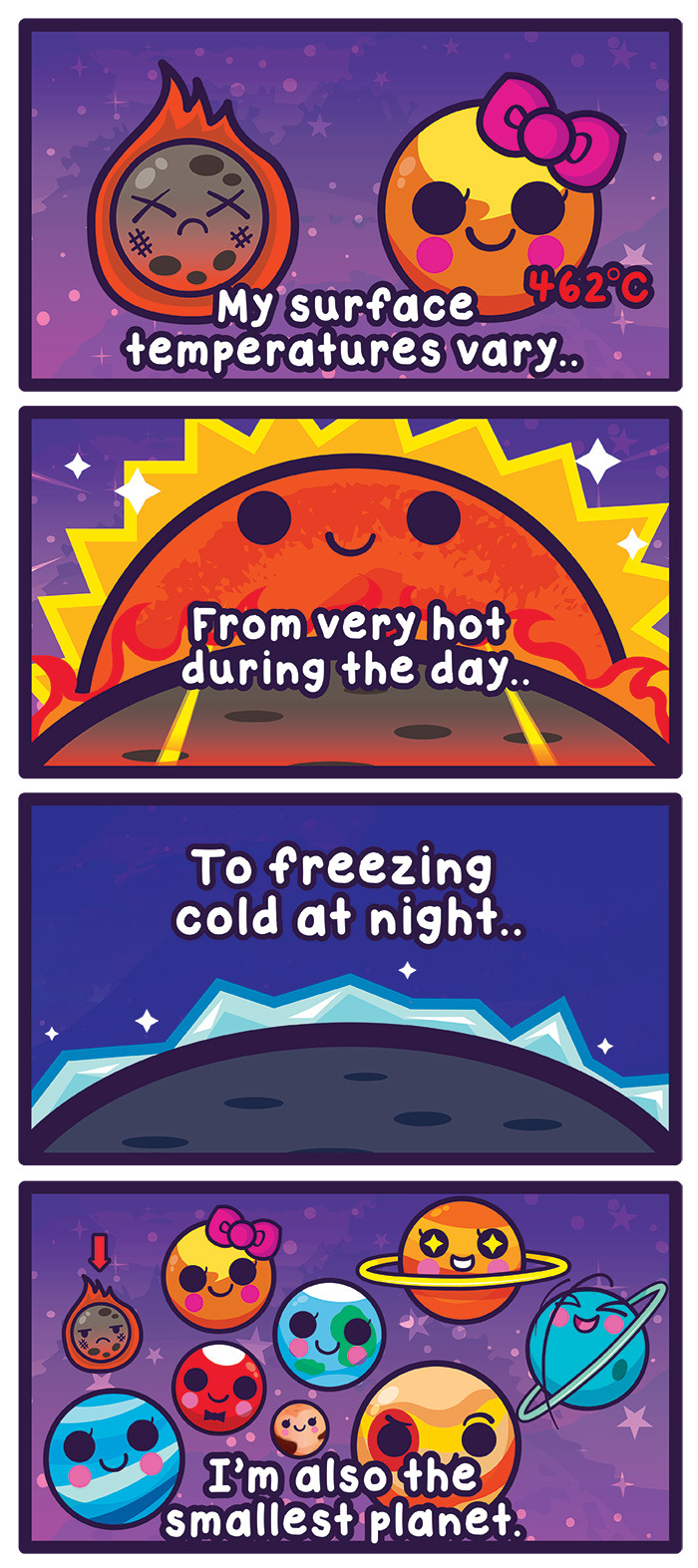
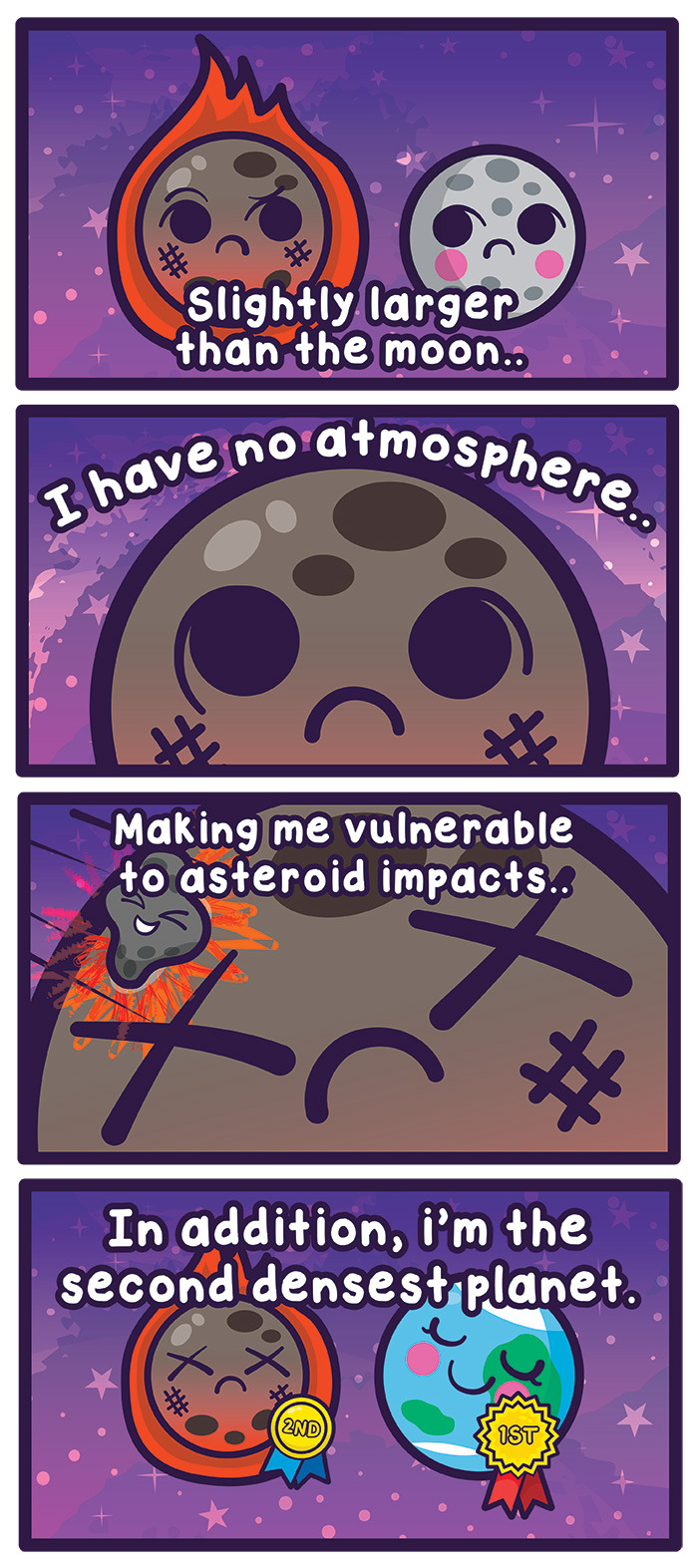
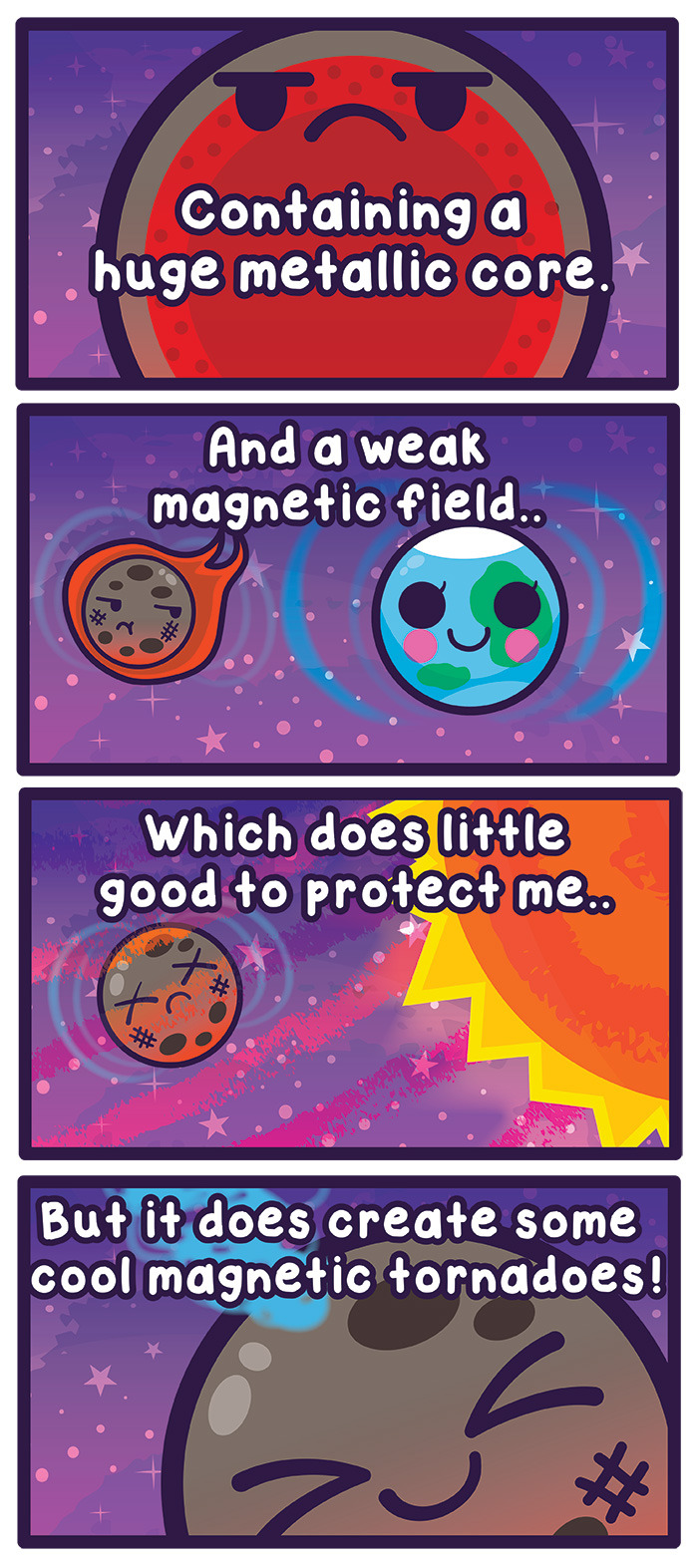

Better late than never!
This week’s entry: Meet Mercury
http://www.space.com/36-mercury-the-suns-closest-planetary-neighbor.html

The Lonely Galaxy
Most galaxies are part of a group or cluster where a neighboring galaxy is never far away. Galaxy NGC 6503 however, is an exception. This galaxy has found itself in a lonely position, at the edge of a strangely empty patch of space called the Local Void. The Local Void is a huge stretch of space that is at least 150 million light-years across.
Credit: NASA, ESA, Hubble Heritage (STScI/AURA)-ESA
Candy Cane of Cosmic Proportions
Imagine how long it would take to eat a candy cane that’s a thousand trillion miles tall! 😋

Scientists peering into the center of our Milky Way galaxy found this 190-light-year tall “candy cane,” but (sadly) it is not a peppermint treat. It does contain other goodies, though. They have found huge collections of material, called giant molecular clouds, where stars are being born. And there are magnetic fields that might be evidence of a bubble from an outburst in our galactic center long ago.

The full image shows our galaxy’s center in infrared (blue), radio (red) and microwave (“minty” green) light. The picture essentially color codes different ways light is produced. The blue and cyan regions show us cool dust where star formation has just begun. Yellow features show more-established star “factories.” Red reveals places where electrically charged gas interacts with magnetic fields.
This image includes newly published observations using an instrument designed and built at NASA’s Goddard Space Flight Center in Greenbelt, Maryland, called the Goddard-IRAM Superconducting 2-Millimeter Observer (GISMO). It was used with a 30-meter radio telescope located on Pico Veleta, Spain, operated by the Institute for Radio Astronomy in the Millimeter Range headquartered in Grenoble, France. The image shows a region about 750 light-years wide.
Find out more about this image and what we can learn from studying star factories!
Make sure to follow us on Tumblr for your regular dose of space: http://nasa.tumblr.com
The #HubbleTelescope captured these auroras on #jupiter caused by light waves interacting with the planet’s magnetic fields.


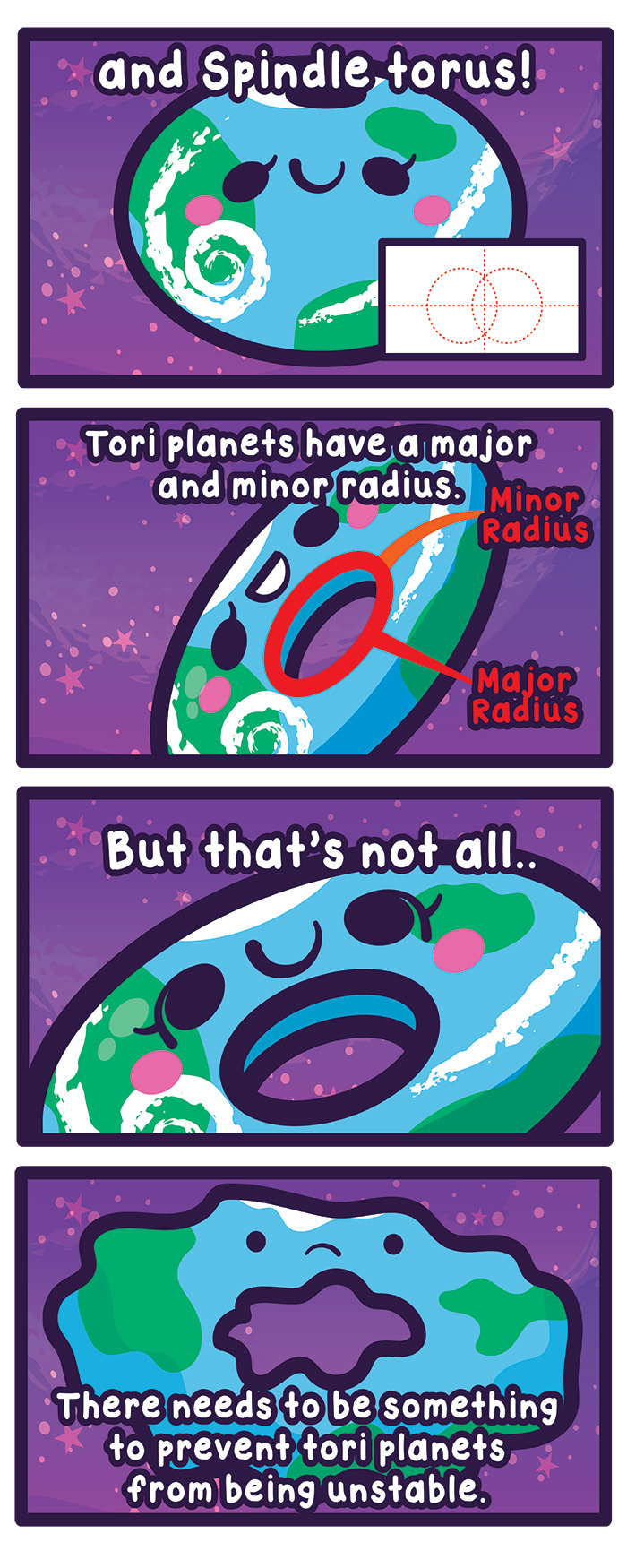
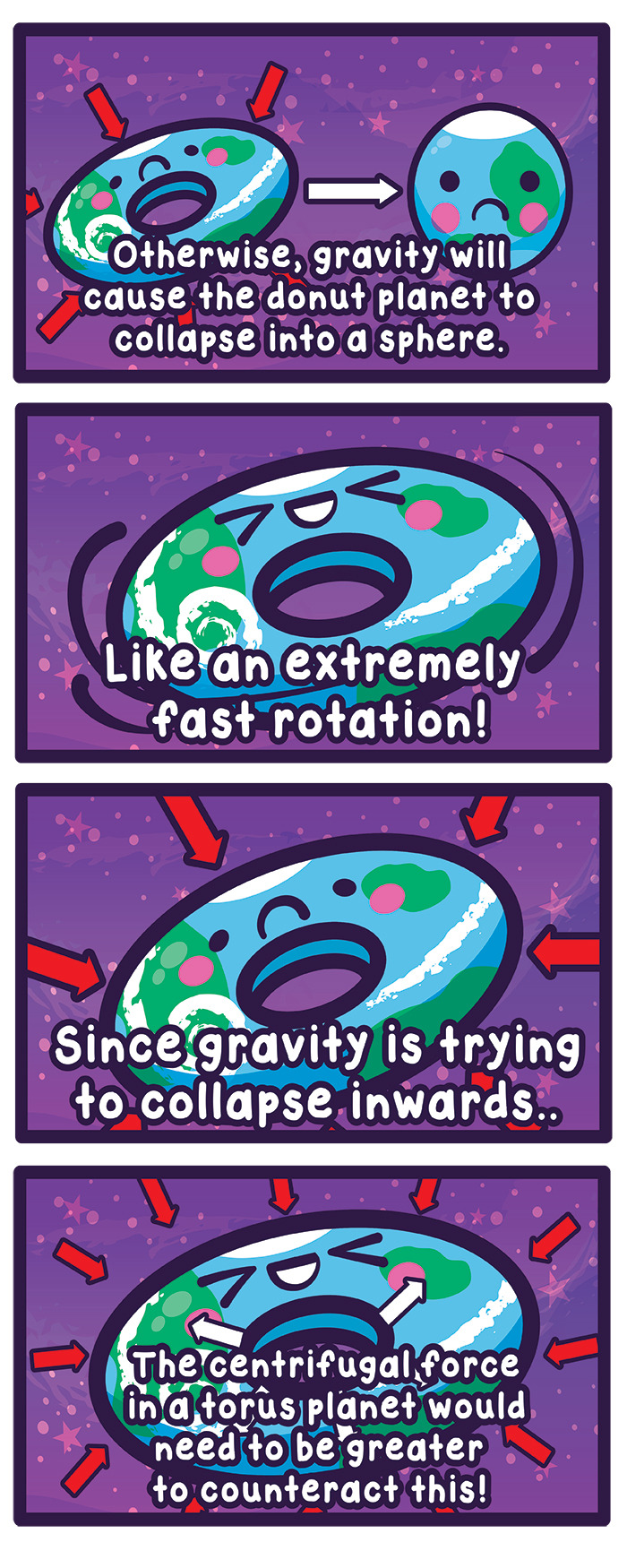


In this 2 part series, Planet X will teach you about the formation of donut planets using the power of physics!
http://io9.gizmodo.com/what-would-the-earth-be-like-if-it-was-the-shape-of-a-d-1515700296

The Einstein Cross Gravitational Lens : Most galaxies have a single nucleus – does this galaxy have four? The strange answer leads astronomers to conclude that the nucleus of the surrounding galaxy is not even visible in this image. The central cloverleaf is rather light emitted from a background quasar. The gravitational field of the visible foreground galaxy breaks light from this distant quasar into four distinct images. The quasar must be properly aligned behind the center of a massive galaxy for a mirage like this to be evident. The general effect is known as gravitational lensing, and this specific case is known as the Einstein Cross. Stranger still, the images of the Einstein Cross vary in relative brightness, enhanced occasionally by the additional gravitational microlensing effect of specific stars in the foreground galaxy. via NASA

“The shockwave from a 20,000 year-old supernova explosion in the constellation of Cygnus is still expanding into interstellar space. The collision of this fast moving wall of gas with a stationary cloud has heated it causing it to glow in visible as well as high energy radiation, producing the nebula known as the Cygnus Loop (NGC 6960/95). The nebula is located a mere 1,400 light-years away. The colors used here indicate emission from different kinds of atoms excited by the shock: oxygen-blue, sulfur-red, and hydrogen-green. This picture was taken with the Wide Field and Planetary Camera 2 on board the Hubble Space Telescope.”
Photo by J Hester of ASU, description via NASA.
-
 ferrarininja reblogged this · 2 weeks ago
ferrarininja reblogged this · 2 weeks ago -
 psifitopia reblogged this · 2 weeks ago
psifitopia reblogged this · 2 weeks ago -
 blue-crescent reblogged this · 2 weeks ago
blue-crescent reblogged this · 2 weeks ago -
 sisterdragonwithfeathers liked this · 2 weeks ago
sisterdragonwithfeathers liked this · 2 weeks ago -
 mmmbopthroughlife liked this · 2 weeks ago
mmmbopthroughlife liked this · 2 weeks ago -
 lesbianlizshaw reblogged this · 2 weeks ago
lesbianlizshaw reblogged this · 2 weeks ago -
 return-of-the-trinidude liked this · 2 weeks ago
return-of-the-trinidude liked this · 2 weeks ago -
 seriousfic liked this · 2 weeks ago
seriousfic liked this · 2 weeks ago -
 raincloud-the-33rd-frog liked this · 2 weeks ago
raincloud-the-33rd-frog liked this · 2 weeks ago -
 tzintzuntzan2 liked this · 2 weeks ago
tzintzuntzan2 liked this · 2 weeks ago -
 tzarina-alexandra reblogged this · 2 weeks ago
tzarina-alexandra reblogged this · 2 weeks ago -
 tzarina-alexandra liked this · 2 weeks ago
tzarina-alexandra liked this · 2 weeks ago -
 i-am-phroggie liked this · 2 weeks ago
i-am-phroggie liked this · 2 weeks ago -
 doyouneedglasses reblogged this · 2 weeks ago
doyouneedglasses reblogged this · 2 weeks ago -
 doyouneedglasses liked this · 2 weeks ago
doyouneedglasses liked this · 2 weeks ago -
 aequinoctiale reblogged this · 2 weeks ago
aequinoctiale reblogged this · 2 weeks ago -
 thepaintdragon reblogged this · 2 weeks ago
thepaintdragon reblogged this · 2 weeks ago -
 thepaintdragon liked this · 2 weeks ago
thepaintdragon liked this · 2 weeks ago -
 cannibal-phantasm liked this · 2 weeks ago
cannibal-phantasm liked this · 2 weeks ago -
 cannibal-phantasm reblogged this · 2 weeks ago
cannibal-phantasm reblogged this · 2 weeks ago -
 hautejester liked this · 2 weeks ago
hautejester liked this · 2 weeks ago -
 linux-evangelist reblogged this · 2 weeks ago
linux-evangelist reblogged this · 2 weeks ago -
 frustraxion liked this · 2 weeks ago
frustraxion liked this · 2 weeks ago -
 anynameisbetterthanmyfirstone reblogged this · 2 weeks ago
anynameisbetterthanmyfirstone reblogged this · 2 weeks ago -
 anynameisbetterthanmyfirstone liked this · 2 weeks ago
anynameisbetterthanmyfirstone liked this · 2 weeks ago -
 delicatefury liked this · 2 weeks ago
delicatefury liked this · 2 weeks ago -
 shenanigator-in-chief reblogged this · 2 weeks ago
shenanigator-in-chief reblogged this · 2 weeks ago -
 professor-cold-ramen reblogged this · 2 weeks ago
professor-cold-ramen reblogged this · 2 weeks ago -
 professor-cold-ramen liked this · 2 weeks ago
professor-cold-ramen liked this · 2 weeks ago -
 edgar-allan-possum reblogged this · 2 weeks ago
edgar-allan-possum reblogged this · 2 weeks ago -
 stealingmyplaceinthesun liked this · 2 weeks ago
stealingmyplaceinthesun liked this · 2 weeks ago -
 thathilomgirl reblogged this · 2 weeks ago
thathilomgirl reblogged this · 2 weeks ago -
 thathilomgirl liked this · 2 weeks ago
thathilomgirl liked this · 2 weeks ago -
 keepcatholic liked this · 2 weeks ago
keepcatholic liked this · 2 weeks ago -
 nessaspond liked this · 2 weeks ago
nessaspond liked this · 2 weeks ago -
 cleopatraxi liked this · 2 weeks ago
cleopatraxi liked this · 2 weeks ago -
 vio1315 reblogged this · 2 weeks ago
vio1315 reblogged this · 2 weeks ago -
 often-lost liked this · 2 weeks ago
often-lost liked this · 2 weeks ago -
 secretwriter-studentjaune reblogged this · 2 weeks ago
secretwriter-studentjaune reblogged this · 2 weeks ago -
 secretwriter-studentjaune liked this · 2 weeks ago
secretwriter-studentjaune liked this · 2 weeks ago -
 greater-than-the-sword reblogged this · 2 weeks ago
greater-than-the-sword reblogged this · 2 weeks ago -
 frangipani-wanderlust reblogged this · 2 weeks ago
frangipani-wanderlust reblogged this · 2 weeks ago -
 catalllo reblogged this · 3 weeks ago
catalllo reblogged this · 3 weeks ago -
 cuddlepossum liked this · 3 weeks ago
cuddlepossum liked this · 3 weeks ago -
 lexarine liked this · 3 weeks ago
lexarine liked this · 3 weeks ago -
 lucabicono reblogged this · 1 month ago
lucabicono reblogged this · 1 month ago -
 lucabicono liked this · 1 month ago
lucabicono liked this · 1 month ago -
 babblingbat liked this · 1 month ago
babblingbat liked this · 1 month ago -
 kalosdyke liked this · 1 month ago
kalosdyke liked this · 1 month ago -
 gallery-of-bones reblogged this · 1 month ago
gallery-of-bones reblogged this · 1 month ago
Astronomy and the other wonders you witness when you look to the skies.
115 posts
